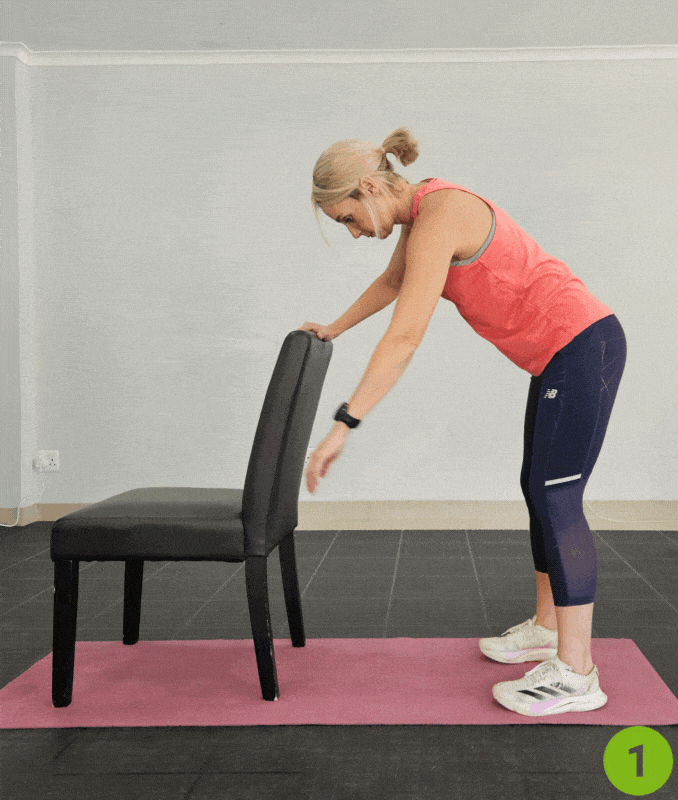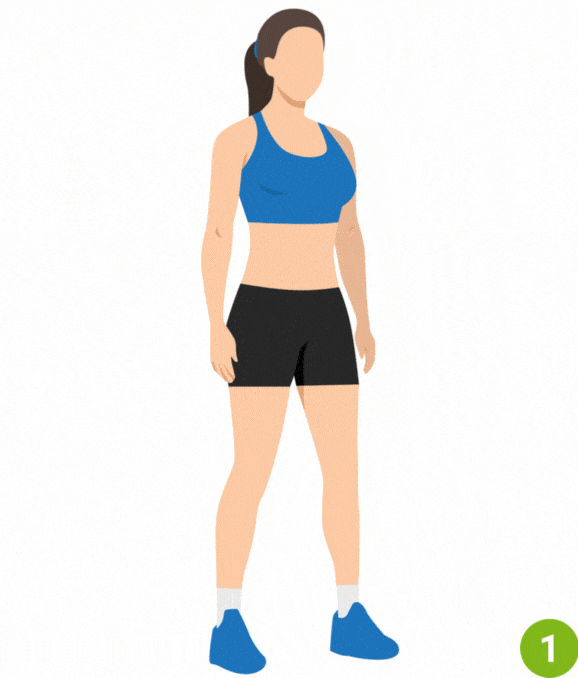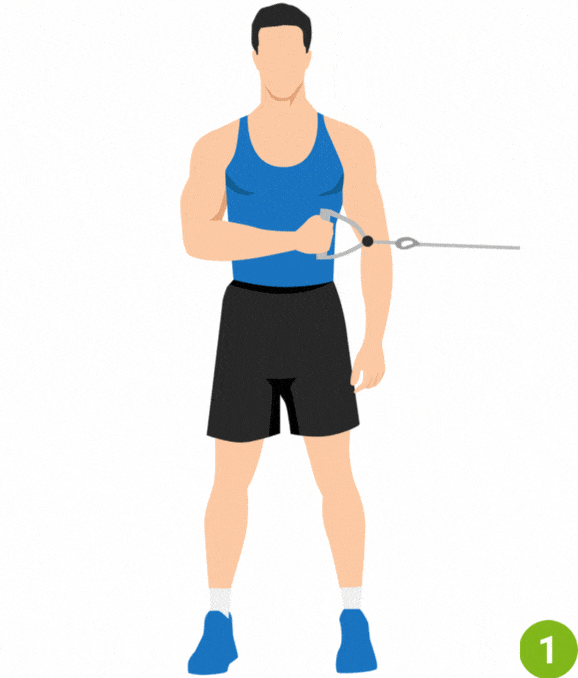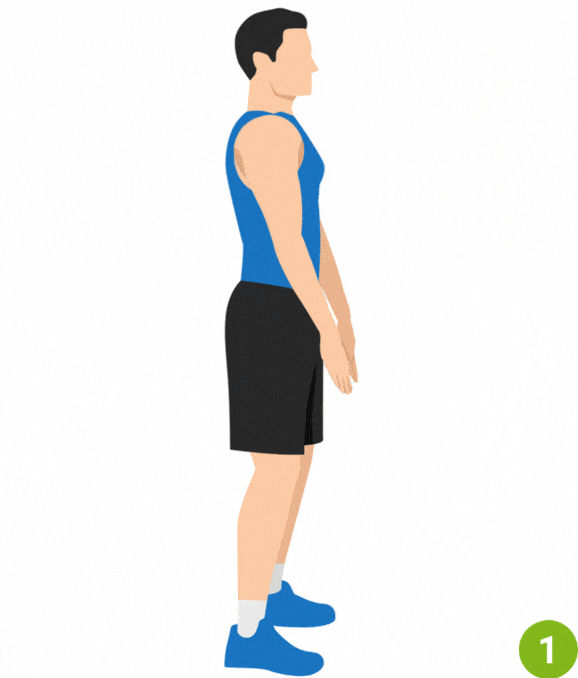
Recovering from shoulder replacement surgery [1] isn’t just about waiting for healing—it’s about doing the right exercises at the right time to protect your new joint, prevent stiffness, and regain full strength and function.
Whether you’ve had a total shoulder replacement or a reverse shoulder replacement, your journey to a pain-free shoulder begins with movement.
But before we dive into your rehab timeline, here’s your quick-start guide:
Each phase is broken down into easy-to-follow moves—designed by physical therapists—to help you safely rebuild strength and mobility.
Phase 1: Protect Healing, Prevent Stiffness (0–6 Weeks Post-Op)
During the first few weeks, your priority is simple: Protect the healing tissues and avoid overusing the operated shoulder. Gentle movement helps prevent stiffness while keeping your shoulder blades, upper arm, and joints aligned.
1. Pendulum Swings
Tip: Avoid shrugging or lifting; let gravity do the work.
The first exercise often recommended after a total shoulder replacement is a gentle pendulum exercise. This exercise helps the muscles around the surgical site relax and encourages some gentle range of motion in your shoulder joint.

- Start in an upright standing position with your feet hip-width apart.
- Hinge from your hips to bend your upper body forward and place your non-surgical hand on a flat, sturdy surface for support.
- Allow your affected shoulder to hang down towards the floor, then gently sway your body to create a small circular motion in your arm, keeping the motion minimal to avoid strain.
- Do not make the movement too large.
- Perform 10 repetitions in each direction, 3 times daily.
2. Hand Grip Squeeze

As you are healing from total shoulder replacement surgery, you may be required to keep your arm in a sling. During this time, the muscles in your forearm and hand can become weakened.
This gentle exercise helps to maintain strength in your forearms and hands.
- Perform 10–15 repetitions in each session, 2–3 times daily.
- Roll up a hand towel and squeeze it in your hand.
- Hold for a few seconds, and then relax. Repeat the movement.
Phase 2: Range of Motion & Early Strengthening (6–12 Weeks Post-Op)
3. Finger Ladder Stretch
Finger ladder exercises help to improve the mobility of the shoulder, elbow, and wrist joints.

- Start in an upright standing position, facing a wall.
- Place your fingers low on the wall.
- Use your fingers to walk your arm up the wall, stopping when you feel a gentle, comfortable stretch without sharp pain in your shoulder.
- Hold this position for 10–20 seconds, then slowly return to the starting position and repeat the movement in the opposite direction.
4. Shoulder Forward Elevation

- Start in an upright standing position with your arms at your sides.
- Slowly raise your arm upward, leading with your thumb and stopping with your arm overhead.
- Hold this position for 10 seconds, then slowly lower your arm to the starting position.
- Repeat the movement.
Avoid shrugging your shoulders or rotating your torso.
5. Shoulder Abduction
Abduction occurs when your arm moves away from the middle of your body. When you raise your arm out from the side of your body, it’s the abduction of your shoulder.
Consult with your surgeon or physical therapist to determine if shoulder abduction is suitable for your specific surgery and recovery stage. Consult with your surgeon or physical therapist to determine if it is suitable for you.

- Start in an upright standing position with your arms at your sides.
- Slowly raise your arm at your side, up to shoulder height, keeping your palm facing downward.
- Maintain your body’s alignment and avoid shrugging your shoulders.
- Hold this position for 10 seconds.
- Lower your arm down to the starting position and repeat the movement.
- To make this shoulder replacement recovery exercises more challenging, hold a lightweight or a dumbbell.
Note: Some patients may need to skip this. Always ask your surgeon first.
Phase 3: Advanced Strengthening & Functional Exercises (12 Weeks – 12 Months Post-Op)
You’re now ready to restore strength, support your shoulder blades, and safely return to daily activities with minimal lasting pain. These exercises also help build confidence in your new shoulder’s performance.
6. Shoulder External Rotation (Resistance Band)

- Hold the resistance band or tubing in the hand furthest away from the attachment point.
- Keep your upper arm aligned with your body, bend your elbow, and position your arm across your body.
- Keep your elbow tucked into your side, and slowly pull your lower arm out to the side.
- Return to the starting position and repeat the movement.
Strengthens the rotator cuff and promotes full external rotation.
7. Shoulder Internal Rotation (Strengthening)

- Hold the resistance band or tubing in the hand closest to the attachment point.
- Keep your upper arm aligned with your body and bend your elbow to hold the tubing in front of your body.
- Pull your lower arm inward across your body, keeping your elbow tucked against your side.
- Return to the starting position and repeat the movement.
Builds muscle control and protects the new joint from instability.
8. Deltoid Front Raises

- Start by standing in an upright position with your arms at your sides.
- Lift your arm in front of your body, keeping your arm straight and your palm facing downward.
- Raise your arm until it is parallel to the floor and hold this position for a few seconds.
- Slowly lower your arm to the starting position and repeat the movement.
Essential for reverse shoulder replacements to stabilize the upper arm.
9. Bicep Curls
Your bicep muscles travel down the fronts of your arms, from your shoulders to your elbows.

- Start in an upright standing position with your arms at your sides.
- Bend your elbow to raise your hand towards your shoulder.
- Slowly lower your arm to the starting position and repeat the movement.
You can make these shoulder replacement recovery exercises more challenging by holding a light dumbbell or by using a resistance band.
Supports arm strength for carrying groceries, lifting pans, or hugging grandkids!
10. Tricep Press

- Your tricep muscles travel down the backs of your arms, from your shoulders to your elbows.
- Lie on your back with your arm extended upward at shoulder height.
- Bend your elbow, lowering your forearm towards your upper arm, then extend your elbow back to the starting position.
- You can make this exercise more challenging by holding a light dumbbell
Builds upper arm strength for pushing and reaching overhead.
Dr. Benjamin Domb, founder of the American Hip Institute and board-certified orthopedic surgeon, emphasizes the critical role of structured rehab after joint surgery:
“The most common mistake patients make after shoulder replacement is either doing too much too soon—or not enough at all. A guided, progressive rehab plan is essential to protect the new joint, restore range of motion, and prevent complications like frozen shoulder. Patients should work closely with their physical therapist to strike the right balance between rest and movement, and to avoid risks such as frozen shoulders [2] or overuse injuries.
Final Tips for Safe Shoulder Replacement Recovery
- Always consult your physical therapist before progressing to exercises.
- Avoid “pushing through pain.” Pain = feedback, not failure.
- Use ice post-workout to minimize inflammation.
- Don’t forget posture! Keep your shoulder blades down and back during movement.
- Stick to your plan, even on days you’re tired—consistency accelerates recovery.
- Never skip stretching exercises—flexibility is the foundation of strength.
Ready to Rebuild Your Shoulder—Safely and Confidently?
Recovery from shoulder [3] replacement surgery isn’t fast—but with the right exercises, performed at the right time, it’s absolutely possible to fully recover without lasting pain. These movements help reduce stiffness, improve mobility, and build strength that supports your shoulder range, joint health, and day-to-day freedom.
Discover the best way to eliminate your shoulder pain, safely and naturally. Check out now this Shoulder Pain Solved!
Frequently Asked Questions
When can I start shoulder replacement recovery exercises?
Most patients begin light shoulder range of motion and stretching exercises within the first 0–6 weeks after shoulder replacement surgery, often under the supervision of a physical therapist. Early movements like pendulum swings and hand grip exercises help prevent stiffness without stressing the new joint. Always consult your surgeon before starting.
What exercises help reduce pain and stiffness after surgery?
Gentle activities such as pendulum swings, finger ladder climbs, and shoulder forward elevation are commonly prescribed to decrease pain, loosen the shoulder joint, and restore mobility. These exercises shown in physical therapy sessions improve circulation and support healing without overloading the operated shoulder.
How long does it take to fully recover shoulder function?
Most patients regain a significant range of motion and upper extremity strength within 6–12 months post-op. However, full recovery depends on factors like age, commitment to rehab, and the type of shoulder replacement performed (standard vs. reverse). Regular strengthening exercises using resistance bands and weights help maintain long-term function.

